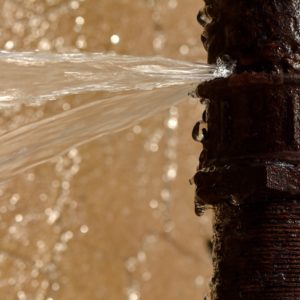It’s no secret that infrastructure across the United States is badly in need of repair. Local roads and highways are pocked with potholes, many large enough to cause significant and costly damage to vehicles; bridges are crumbling with several along the largest trucking routes named to priority fix-it lists for states and the federal government. The things we can see tend to get fixed first, but what about the infrastructure we don’t see? The pipes that run under our homes, schools, offices, and roads, and carry either fresh water for drinking or wastewater, are some of the most important infrastructure in the country but we rarely pay attention to these until something breaks.
There are more than 1.2 million miles of water pipes running underneath the streets and countrysides in America. Most of those pipes have a service life of 75 to 100 years, but for many municipalities, their pipes are either nearing or have reached the end of their lifespan. About half of Philadelphia’s water pipes were installed before 1930, but there are some pipes that were, incredibly, laid before the Civil War. Many of Milwaukee’s pipes were put in the ground prior to the mid-1950s, and officials there, as in most other cities, are looking at tightening budgets and wondering how far their dollars will stretch.
The spending question is one that will soon takeover the national debate. During his campaign, President Donald Trump pledged to rebuild the country’s infrastructure, which is expected to cost upwards of $1 trillion. That cost will be split among local jurisdictions, states, and the federal government, but that’s still an enormous amount of money that must be spent wisely. This is where Republicans must forcefully exert their political will to make sure that infrastructure dollars are used prudently.
According to a report from the Congressional Budget Office, in 2014, more than 75 percent of the $416 billion in public funding spent on transportation and water infrastructure came from state and local governments with the federal government chipping in $96 billion. But most of the money – 57 percent – went towards operations and maintenance, while rehabilitating existing pipes took a backseat. The same report also noted that starting in 2003, the cost of materials to build and operate water infrastructure “began to rise rapidly.” The more expensive the price tag to replace our aging infrastructure, the more important we get it right, and that means using the right kind of pipe to ensure that new or replacement systems last for as long as possible.
While there are still a few remaining wooden pipes in the country, the first water systems were constructed from cast iron. There’s a reason cast iron pans are handed down through generations of families – it’s durable, safe and long-lasting. There’s even a Cast Iron Century Club, founded in 1947, that honors public utilities with cast iron water mains still in service after 100 years. The Cast Iron Sesquicentennial Club, formed in 1989, is for 150-year-old cast iron water mains.
Ductile Iron Pipe is the construction parallel to your grandmother’s frying pan. It, too, is durable, safe and long-lasting – and is the only infrastructure material with a service life upwards of 100 years. Given the constraints on public dollars, it makes sense to use these funds to buy the longest lasting pipe available. The Environmental Protection Agency estimates that each year, there are about 240,000 water main breaks that cause anywhere from minor to severe disruptions around the country. When officials were putting together their “wish lists” for the Obama Administration’s stimulus package, the list from Ohio alone totaled $3 billion for drinking water infrastructure projects.
For as advanced an industrialized country as we are, our infrastructure is woefully in need of repair. We take for granted that when we wake up, our sinks, showers, and toilets will work as expected. But the 156,000 public water systems we count on to make all that happen are essentially working on borrowed time. President Trump was right to focus on the great need to repair and replace these systems, and congressional Republicans would be wise to work with him to fund these priorities, which will create jobs and provide a true economic stimulus.

